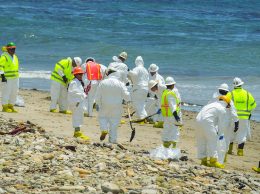Our view: State needs to be smarter about water infrastructure
IN THIS ARTICLE
- Editorials Topic
- Henry Dubroff and Editorial board Author
By Henry Dubroff and Editorial board Friday, February 17th, 2017
The dam was declared totally safe.
The collapse was totally unexpected.
This month’s emergency evacuation of 200,000 people below the troubled spillways at the Oroville Dam in Northern California recalled memories of a disaster right in our backyard.
On March 2, 1928, as many as 600 people, many of them residents of Ventura County, died when the St. Francis Dam above Santa Clarita burst. The death toll makes the dam’s collapse the second costliest disaster in California history in terms of human life, after the San Francisco earthquake and fire.
St. Francis was a brand new dam, built with fatally overconfident engineering by William Mulholland, who retired in disgrace after the tragedy.
Oroville, by contrast, has stood as the nation’s tallest since 1961 and the structural soundness of the dam itself has not been the issue. However, the missed signals on the potential for failure of its spillways has a troubling parallel to the missed warnings about problems at St. Francis.
At press time, the problems at Oroville were being temporarily addressed and residents were returning home.
However, the need for California to get a lot smarter about infrastructure spending, particularly when it comes to water infrastructure, has once again been underscored.
Consider:
• Lake Cachuma and other reservoirs in Santa Barbara and Ventura counties are far from full, while water is spilling over reservoirs in the northern part of the state. There has to be a more effective way to balance the water supply to retain runoff in wet years and prepare for the next drought.
• Storage facilities like those of United Water Conservation District are not filling as quickly as they could due to environmental mandates that could temporarily be eased during wet years, with minimal impact to steelhead populations.
• We’re still far from resolving problems with salt-water intrusion into our agriculturally important coastal plains.
• Water supply and demand won’t balance until there are some rudimentary pricing mechanisms in place.
California’s brush with disaster at Oroville should do more than prompt Google searches for the remarkable film of the St. Francis Dam collapse. It should spur a debate about the future of the state’s water infrastructure and how to pay for it.
POLITICAL POSTURING
Speaking of paying for things, did anybody else notice the political jockeying that took place when first Treasurer John Chiang and then Lt. Gov. Gavin Newsom said they would block proposed re-drilling of oil wells offshore in Santa Barbara County?
The project, proposed last year by Venoco, is in early stages of getting approvals but moves by Chiang and Newsom, who happen to be rivals to succeed Gov. Jerry Brown, mean that two of the three votes on the State Lands Commission are now opposed to the project.
We get it that in California there are way more votes for opposing any offshore oil-and gas project than for supporting it. But the harder part is figuring out how Santa Barbara County, which already faces a fiscal crisis, finds money to replace the millions of dollars a year in taxes and fees that would have been produced by extending the life of Platform Holly.
Opposition by Chiang and Newsom could set the stage for a better deal for California if the project is eventually approved. But Santa Barbara County’s budget shouldn’t become collateral damage in the early sparring over who will be the next governor.











